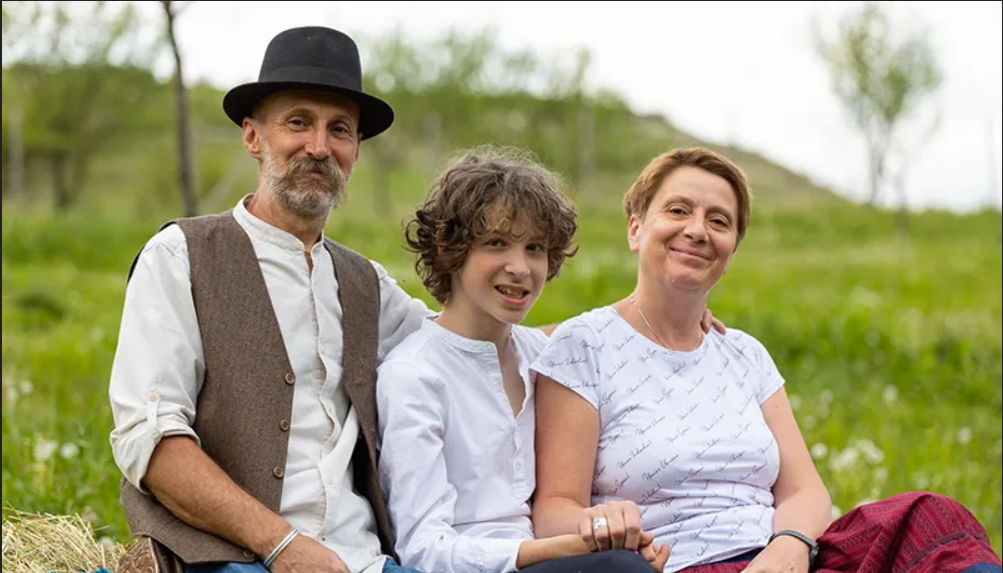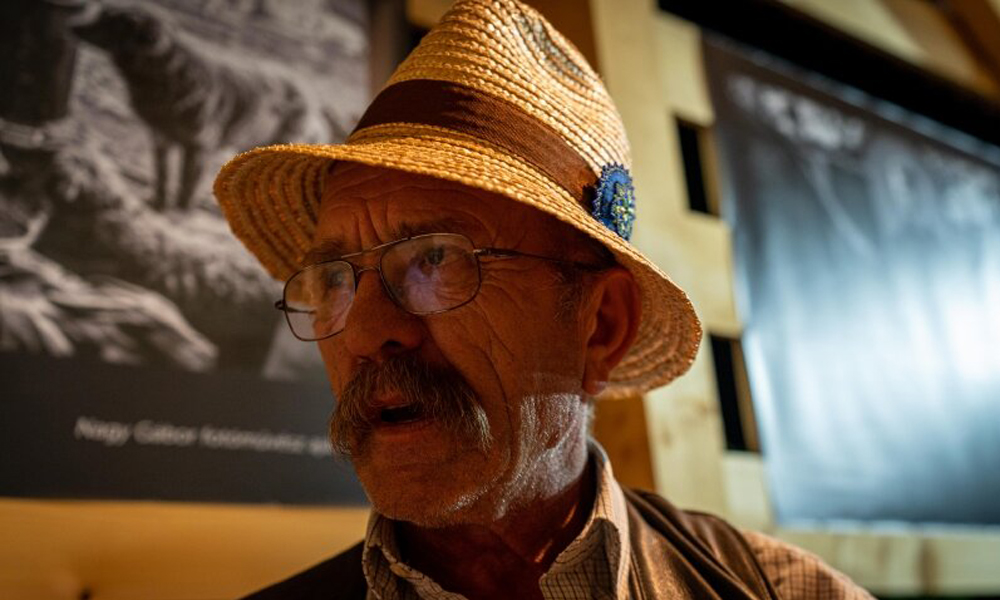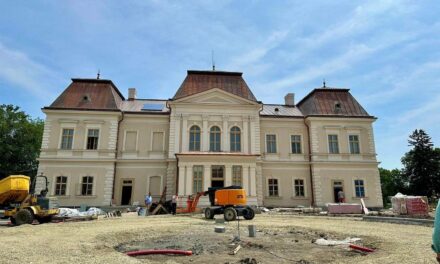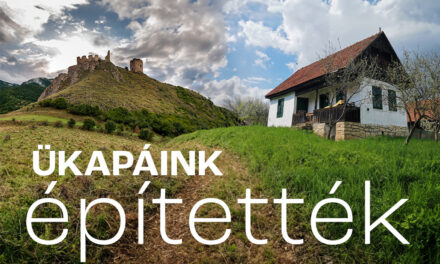The married couple Bakos Siklód, who run the farm in Mákófalv, talked about their lifestyle, horses, horse therapy, children's camps and their plans. Interview.
Kinga Bakos Siklódi and Attila (Ata, as they are known) with their sons Gergő have been living in Mákófalva, 30 kilometers west of Cluj-Napoca, for 17 years. They bought an old farmhouse, which they renovated, in a picturesque environment, hidden among the hills of Kalotaszeg, in an almost completely Hungarian sack village, which became their home. The married couple who moved out of the city immediately fell in love with the quiet village environment and at the end of the village, approx. A few years ago, they started to build the Táltos Stud Farm , where they currently keep eight horses.
Ata has a gardening business, but he spends every free moment with his horses on the farm, where he leads horse programs and horse therapy sessions for children with physical and mental disabilities. Kinga is an English teacher at the István Báthory Theoretical High School in Cluj-Napoca, but he also takes an active part in life on the farm and, in addition to horse riding, organizes camps and thematic activities for children. And those who love the location with fruit trees, the horses, the Tyrolean ropeway playground on the farm. We visited them on a bright summer afternoon, walked around the farm, and then sat down in the barn under construction to talk about their work and plans so far.
Let's start at the very beginning. What were you looking for in Mákófalva? They have lived here for a long time. Why did you move here from Cluj?
Kinga: Seventeen years ago, in 2006, we got tired of living in sublet apartments in Cluj. We said then that we were looking for a house in a village 30 kilometers from the city. Inaktelke was in the picture, an acquaintance had a house for sale there, we went to see it.
Ata: And on the way we saw the Mákófalva sign on the side of the road, we had never been here before. I had heard the name of the village before, but I knew it was in Székelyföld (laughs). We came in, met a man, asked if there was a house for sale, and he showed me two or three houses. At the end of the day, Kinga said that she likes this house, where we still live today. So be it, I said. And that's it, we bought it. So we got here to Mákófalvá just like that.
Wasn't it difficult to travel 30 kilometers into the city every day? Since Gergő is in school, Kinga is tied to his workplace, Atat to the business.
Kinga: It wasn't easy, but we soon got used to it. Back then, there weren't as many traffic jams in the morning as there are today, and with a little time planning, we got in on time without any problems. Obviously, it is still difficult to organize the afternoon programs, for example, if, say, Gergő has something to do in the city after school. However, he gets something here that makes it much easier for him to give up his afternoon programs.
Ata: It is much more free and safe for a child to come and go here in the village than, say, in a city residential area. They go to fields, ride bicycles and move much more freely. Especially since I have the riding stable… they come here with their friends, they ride, so I don't need to elaborate on that.
How did the Táltos Riding School begin? When and how did you get the idea to start building this place here?
Ata: It started when we bought a small orchard, then we thought that a small plot of land would be useful next to the orchard. I came up here, and the owner of the plot was just here buying and selling. We got into a conversation and after half an hour I went home to Kinga saying that we had agreed on a plot with the neighbor. And so we added half a hectare next to the other. But at that time we didn't know what to do with this lot, it just happened to us. Then, about eight years ago, the teacher from the children's home in Torocko called me to ask if I was interested in a horse. He thought of me because he knew that I go to Béla's place to ride (Béla Tunyogi runs the Szilaj Riding School Napoca - ed.) And I said yes, I'm interested.
You weren't looking for the horse, he was looking for you...
Father: Exactly. The horse, Fecske, came to me, but then I kept it at Béla's horse farm for two years, and there I started working with it and training it. Then Fecske escaped to Kalota, where we found him a companion, Táltos, to the horse owner István Bethlendi. The two horses were there for almost three years. The idea came almost automatically that they should not be so far away, let's bring them home, since the land is here. This was the beginning of our stable. The two horses lived here, we came out to pet them, but we didn't ride them then.
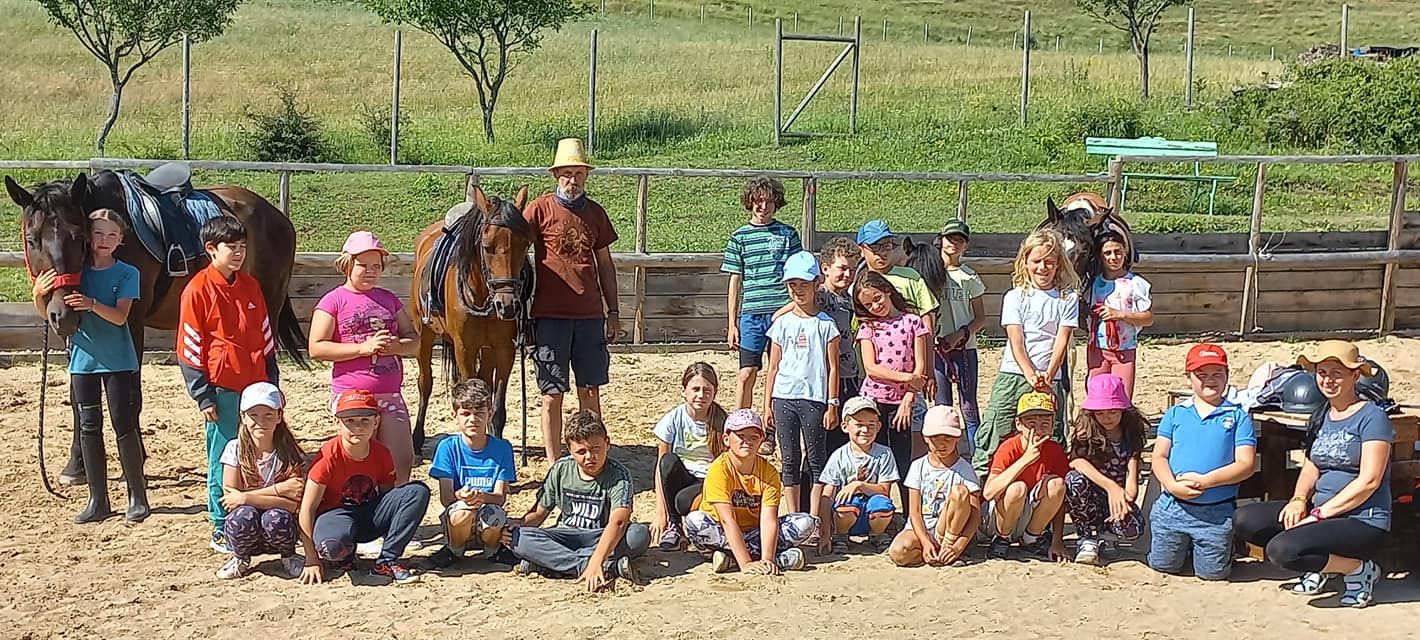
Photo: Facebook page of Táltos Lovastanya
Kinga: It kind of came naturally. The Frinkuj Árpis, who had horses in Méra, said that there should be a pony, Dolly, the children grew it out, don't we need it? And then we got a third horse because he also came here.
Ata: Yes, that was the moment when riding came into the picture. Because our son Gergő said that he wanted to ride on Dolly, and this is where the whole children's riding and riding lessons started. We really didn't have any plans, one development led to another.
Then the Táltos Riding School is a very young initiative...
Ata: Our association was founded in 2021, and since then we have been riding in an organized form, before that, at most, our friends came here to pet horses, the children did a lap or two in the round paddock, because that was what it was then. So this is the second summer that we organize public activities here.
How did three horses become eight in two years?
Ata: So that we didn't have a suitable horse for the horse therapy we wanted to deal with. I had previously completed an equestrian therapist course, gaining the knowledge to participate in the therapy of children with physical and mental disabilities. The first horse is a sport pony, it has Arabian blood, so it is a fast horse, not suitable for this purpose. The second horse has never been ridden, it was not suitable for therapy either, and the third is a pony, too small for that. So another horse was needed. That's how we got that spotted, old pony. He became the therapy horse and the team leader among the horses. Then the others came, now there are eight of them.
What is this healing or therapeutic riding?
Ata: Equestrian therapy, for example, is very widespread and accepted in Hungary, but here it is still in its infancy, people don't know much about it, they don't know about its beneficial effects. I got into it by reading about such a training somewhere, enrolled, and graduated. It was a two-stage training, the first stage was self-awareness. That's when I learned that you first have to get to know yourself through a horse. In the second, half-year phase, the training took place on one long weekend per month, regarding the actual therapy: movement development, self-confidence improvement, for children living with nervous system disorders, behavioral disorders, hyperactivity or autism.
This year, for example, we worked with the Kozmutza Flóra special school in Cluj-Napoca, after they contacted us and we had a four-month program, they came out with the children three times a week. This therapy is performed by two of us: I am the rider, and my partner, who performs the exercises with the children, is special education teacher Ágnes Tímea Manhertz (now Hodrea).
What are the results of this therapy, what feedback do you have?
Ata: First of all, the parents are very happy that there is such an opportunity and that such an occupation exists in Hungarian. Because I am not the only horse therapist in the Cluj area, but the only one who deals with this in Hungarian. And this is very important: to speak to the child in his mother tongue.
Kinga: Next to your great-aunt. There is also such a therapeutic option in Hungarian in Lőrincrév, as far as I know, it is the closest one, so the children from Cluj had to be taken quite far for horse therapy.
Ata: I will give an example of the effectiveness of the therapy: a child who, due to muscle weakness, was unable to stand up in the stirrup for the first time, at the end of the session without holding on, stood smoothly in the saddle and rode. Or, for example, the child who couldn't hold on and couldn't hold his arms to the side, in the end he sat on the horse with his arms outstretched, swaying a bit, we call this flying.
This therapy is a complex method of developing movement and body coordination. Because practically all the muscles of the body work in concert during riding. There is the spine, which holds the whole body, and through which the brain receives constant stimulation, and movement and balance are constantly needed in the saddle. This session is particularly effective at a tender age, say for three-year-old children, when the development of the neural pathways is still in progress, for a ten or so-year-old, the development is a little more difficult.
So it is already a huge success that a child with movement coordination problems is able to sit in the saddle on a moving horse, and this is just the starting point, because they also perform various exercises on the horse's back.
This is the movement-developing part of the therapy, but I think direct contact with the animal also has beneficial psychological effects.
Father: Yes, very much. I can give a concrete example of this: there was a child who did not want to touch anything because of a phobia, if a toy fell and became sandy, he stopped holding it. And by the fact that he came to us twice a week for the group session and we also dealt with him individually, in the end he led the horse onto the field alone, then led it out, petting and hugging the horse in the process. They left with the child crying that he needed a sandbox at home (he did, his father fixed it). So this was a huge step for both the child and his family, because until then the child did not want to touch anything, and his clothes had to be kept spotlessly clean.
And then there's the distraction part. Many children who are brought here, such as those with autism, are sometimes present and sometimes in their inner world.
In such cases, the goal of the therapy is to keep them in the present for as long as possible with the help of riding. For example, there was a little girl who, as we put her on the horse's back, extended her hand to me, and I knew that as long as I held her hand and we kept eye contact, she was there with us, "out there", so to speak.
How does Kinga come into the picture, what does he do specifically? Because as I looked back at on your Facebook pages , he is also in the thick of it. Camping, English and Romanian language classes, craft demonstrations, games...
Kinga: First of all, I have to say that I fully support Ata in everything, but I don't ride a horse (laughs). Well, it happened once, but I told you that the horse will be treated well. At the beginning, when the horses came, I watched them from the other side of the electric shepherd. My son said, "Mom, come here, pet me, but I admit, I was scared." As a city person who grew up in a block of flats, I never had any contact with animals, especially horses. But a lot has changed since then, if Ata is not at home, I carry the hay bales for them or bring the water for them to drink.
The full interview can be read on Főtér!
Featured image: Sándor Fall/Főtér

